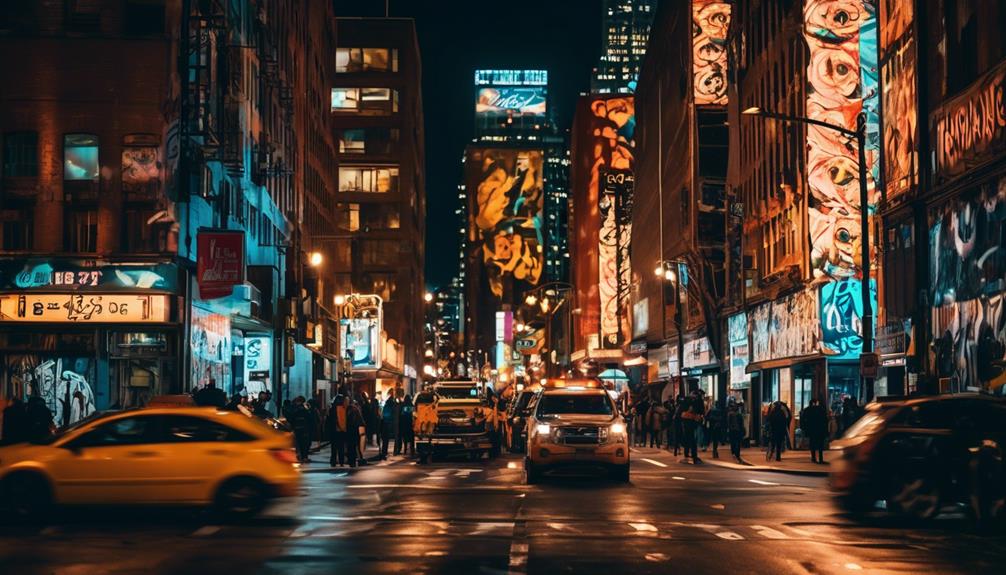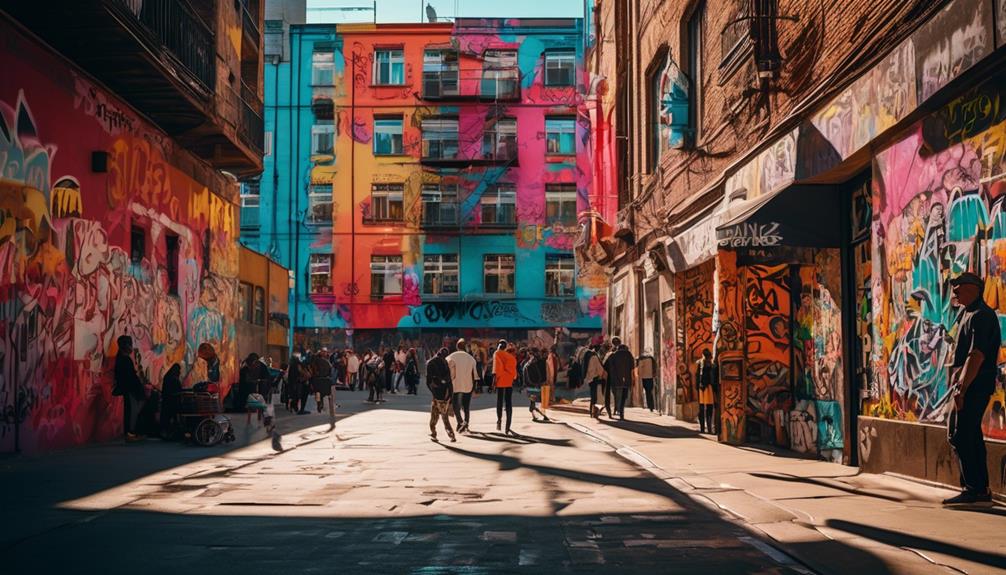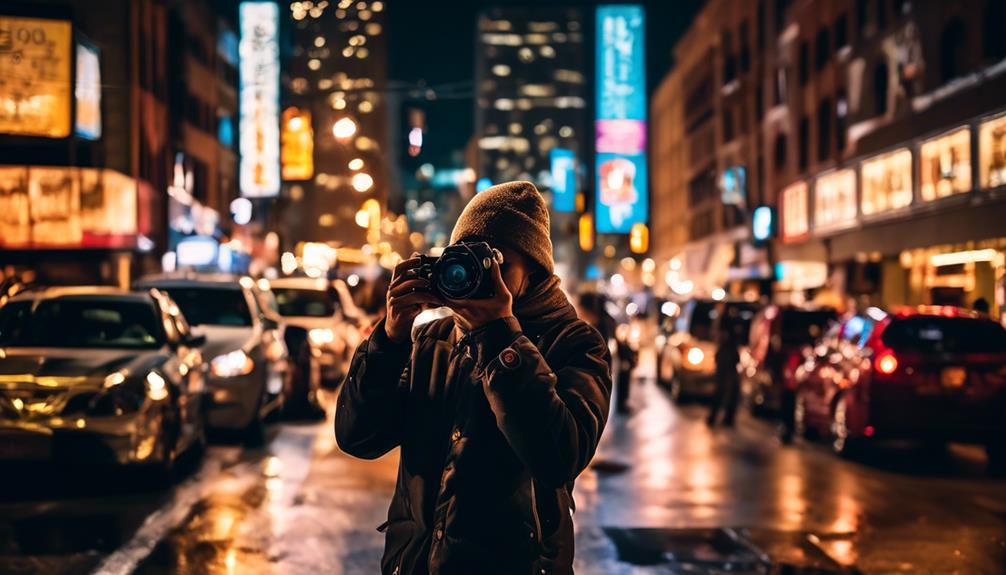Please note this post may contain affiliate links picked by me (Jay) that I have deemed may be of interest or relevant to you the reader of this.
These links do not affect the cost of the thing if you decide to purchase but i may get a little money if you choose to purchase.
For more information on my affiliate link policy click here.
As a budding shutterbug eager to capture the vibrant essence of the bustling streets, I can't help but feel like a time traveler armed with a modern-day camera.
The art of street photography is a thrilling adventure that allows me to freeze fleeting moments in time and immortalize the beauty of daily life. But where do I begin? How do I tap into the wellspring of inspiration that street photography has to offer?
Fear not, fellow enthusiasts, for I have embarked on a quest to uncover the five best beginner techniques that will ignite your creativity and take your street photography to new heights.
So, grab your camera and join me on this journey as we unravel the secrets to capturing candid moments, exploring composition techniques, harnessing the power of natural light and shadows, mastering the art of street portraits, and embracing the mesmerizing urban landscape.
Get ready to unlock your inner street photographer and unleash your artistic vision upon the world.
Key Takeaways
- Freeze fleeting moments of everyday life
- Capture raw and unfiltered emotions
- Blend into the background as an unobtrusive observer
- Use a wide-angle lens to capture the entire scene
Capturing Candid Moments
How can one capture those authentic, unposed moments in street photography? It's all about capturing emotions and telling stories through images. Street photography is a medium that allows us to freeze the fleeting moments of everyday life, capturing the raw and unfiltered emotions of people in their natural habitat. It's about finding those genuine connections, those split-second expressions that reveal a deeper narrative.
To capture these candid moments, it's important to blend into the background, becoming an unobtrusive observer rather than an intrusive photographer. I personally prefer to use a wide-angle lens, as it allows me to capture the entire scene while still being close enough to capture the details and emotions of the subjects. I also keep my camera settings ready, ensuring a fast shutter speed to freeze the action and a wide aperture to create beautiful bokeh and isolate the subject.
Another technique I find effective is to anticipate the action. By observing the scene carefully, you can often predict when a moment of interest will occur. This allows you to position yourself in the right place at the right time, ready to capture that decisive moment.
When it comes to storytelling through images, it's important to consider the composition and framing. Look for elements that add depth and context to the scene. Leading lines, juxtaposition, and layers can all contribute to creating a compelling narrative in your street photographs.
Exploring Composition Techniques
One of the keys to creating captivating street photographs is mastering composition techniques that enhance the visual impact of your images. When it comes to street photography, incorporating leading lines and the rule of thirds can greatly elevate your compositions.
Leading lines are elements in a photograph that guide the viewer's eye towards the main subject or focal point. These lines can be found in various forms, such as roads, buildings, or even shadows. By strategically positioning yourself and your camera, you can create dynamic compositions that draw the viewer's attention and add depth to your images.
Another powerful composition technique is the rule of thirds. This guideline suggests dividing your frame into a 3×3 grid and placing your main subject along the lines or at the intersections. This technique adds balance and visual interest to your photographs, making them more visually appealing and engaging.
Utilizing Natural Light and Shadows
Now that we've explored composition techniques such as leading lines and the rule of thirds, let's delve into the art of utilizing natural light and shadows in street photography. Mastering the use of natural light can greatly enhance the mood and atmosphere of your street photographs, making them more captivating and visually compelling.
Here are some techniques to consider:
- Playing with reflections: Look for reflective surfaces like windows, puddles, or shiny objects to create unique and dynamic compositions. Experiment with different angles and perspectives to capture interesting reflections that add depth and intrigue to your images.
- Utilizing silhouettes: Silhouettes can be a powerful storytelling tool in street photography. Find strong and distinctive shapes or figures against a bright background, such as a sunset or a bright light source. By underexposing the subject, you can create striking silhouettes that convey emotion and mystery.
- Embracing dramatic shadows: Shadows can add drama and depth to your street photographs. Pay attention to the direction and intensity of the light source, and position yourself to capture interesting shadows cast by buildings, objects, or people. Experiment with different angles and perspectives to create visually arresting images.
- Playing with light and shadow contrast: Explore the contrast between light and shadow to create visually striking images. Look for scenes where light and shadow intersect, creating interesting patterns or textures. By carefully composing your shot, you can emphasize the interplay between light and shadow, resulting in captivating and dynamic street photographs.
Mastering the Art of Street Portraits
To truly capture the essence of individuals in their natural environment, mastering the art of street portraits requires a combination of observation, communication, and technical skill. Street portraits provide a unique opportunity to connect with strangers and create compelling images that tell a story.
One way to enhance your street portraits is through creative posing. Experiment with different angles, perspectives, and body language to bring out the personality of your subjects. Encourage them to be themselves and capture their natural expressions and gestures.
Another technique to consider is using props. Props can add an element of interest and help create a narrative within your portraits. Whether it's a colorful umbrella, a musical instrument, or a book, props can provide context and spark conversation with your subjects. They can also help break the ice and make your subjects feel more comfortable in front of the camera.
When incorporating creative posing and props into your street portraits, remember to be respectful of your subjects' boundaries and ask for their consent before photographing them. Building a rapport and establishing trust is essential in street photography.
Embracing the Urban Landscape
Embracing the vibrant energy and diverse architecture of the urban landscape, I immerse myself in the bustling streets, seeking out unique perspectives to capture in my street photography. Urban exploration isn't just about capturing the buildings and structures that define the city; it's about finding the hidden gems and unexpected angles that bring a fresh perspective to the urban environment.
Here are a few techniques I use to find those unique perspectives:
- Look up: Instead of focusing solely on eye-level shots, I challenge myself to look up and capture the towering skyscrapers against the sky. This not only adds depth to my photos but also showcases the grandeur of the urban landscape.
- Play with reflections: Urban environments are filled with glass windows, shiny surfaces, and reflective materials. By experimenting with reflections, I can create captivating images that blend reality and abstraction.
- Explore back alleys and side streets: While main streets may be bustling with activity, the true character of a city often lies in its hidden corners. By venturing off the beaten path, I discover unique scenes and capture the essence of urban life.
- Capture the details: Sometimes, it's the small details that tell the story of a city. From street signs to graffiti, I pay attention to the little things that add character to the urban landscape.
Through urban exploration and finding unique perspectives, I'm able to capture the essence of the city and share my vision with others. It's a constant journey of discovery and a testament to the ever-evolving nature of urban life.
Frequently Asked Questions
How Can I Overcome the Fear of Photographing Strangers in Street Photography?
To overcome the fear of photographing strangers in street photography, I found that building confidence is key. It starts by reminding yourself that you have every right to capture the beauty of the world around you.
Start small, by taking photos from a distance or in crowded areas. Gradually, challenge yourself to approach people and ask for their permission. Remember, practice makes perfect, so don't be discouraged by initial setbacks.
Embrace the unknown and let your passion for photography guide you.
What Are Some Tips for Finding Interesting Subjects in Urban Environments?
When it comes to exploring urban environments, finding interesting subjects is like uncovering hidden gems. It's all about immersing yourself in the bustling streets, observing the rhythm of life, and seeking out those unique moments that catch your eye.
By using composition techniques such as leading lines, framing, and juxtaposition, you can create captivating images that tell a story.
Are There Any Legal Considerations or Restrictions When Doing Street Photography?
When it comes to street photography, there are indeed legal considerations and restrictions that we need to be aware of.
Privacy concerns and ethical dilemmas often come into play, as we capture candid moments in public spaces. It's important to respect people's privacy and obtain consent when necessary.
Understanding the laws and regulations in your area is crucial to ensure that you stay within the boundaries of the law while still capturing the essence of street photography.
What Are Some Post-Processing Techniques to Enhance Street Photography Images?
When it comes to enhancing street photography images, there are a couple of post-processing techniques that I find really effective.
One is black and white conversion, which can add a timeless and gritty feel to the photos.
Another technique is color grading, where you can manipulate the colors to create a specific mood or atmosphere.
Both of these techniques can really elevate your street photography and make it stand out from the crowd.
How Can I Develop a Unique Personal Style in Street Photography?
Developing a unique personal style in street photography is all about finding your voice and expressing it through your images. For me, it starts with developing a signature editing style that sets my photos apart.
I experiment with different techniques, filters, and tones to create a distinct look. Additionally, I find that incorporating storytelling elements into my street photography adds depth and interest.
Conclusion
In conclusion, street photography is a thrilling art form that allows us to capture the raw beauty of everyday life. By mastering the techniques discussed in this article, such as candid moments, composition, natural light and shadows, street portraits, and urban landscapes, we can truly bring our photos to life.
Remember, as the saying goes, 'A picture is worth a thousand words,' and with street photography, we've the power to tell captivating stories through our lens. So grab your camera and hit the streets, the world is waiting to be captured!


